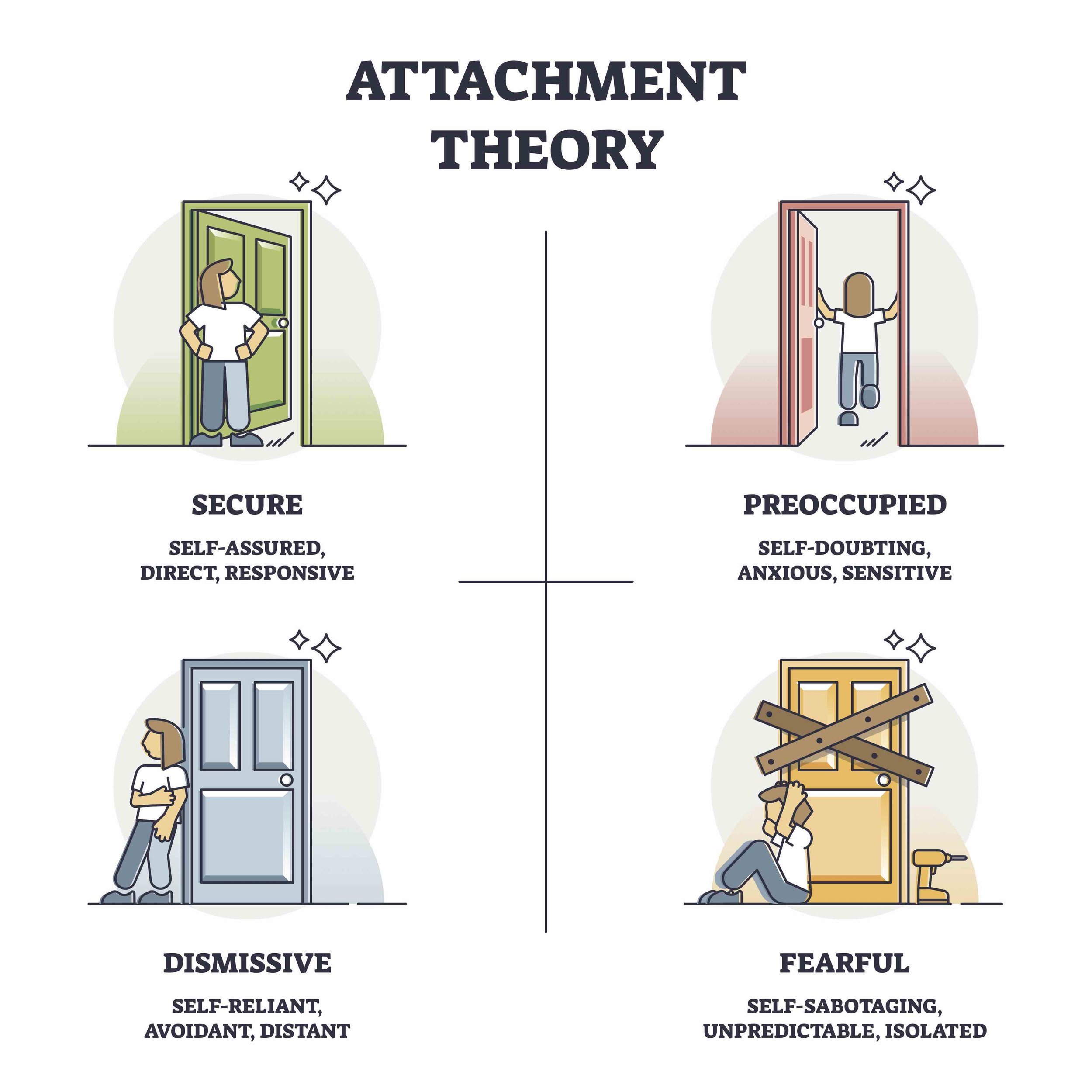Are They the One? When to Commit — for the Anxious Attachment Style
How do you know when to commit?
For someone with an anxious attachment style, knowing when to commit can be tricky. Let’s talk about how you can tell if the timing might be right.
First, a quick recap on the 4 attachment styles, because this post is more geared toward the anxious style, but the dynamics we talk about are secure dynamics and apply to the other styles to some degree.
4 attachment styles
Secure Attachment: Feels at ease with both intimacy and independence. They are confident, maintain a balanced approach in relationships, and are responsive to their partner’s needs.
Anxious or Preoccupied Attachment: Often concerned about their partner’s availability and responsiveness. They seek frequent reassurance and can be very sensitive to relationship dynamics.
Avoidant or Dismissive Attachment: Values independence and tends to maintain emotional distance. They might find getting close challenging and keep relationships more reserved.
Disorganized or Fearful Attachment: Displays a mix of anxious and avoidant behaviors. Their approach to relationships can be inconsistent and unpredictable, feeling both uncertain and conflicted about closeness.
People typically have one primary style, and they’re also typically a blend of other styles. So if you have the anxious style, it’s helpful to be in a relationship where your partner doesn’t mind reminding you that you’re amazing, because you might sometimes doubt yourself.
Therefore, to move forward with commitment, one thing to look for is:
Consistent Reassurance
Because you might need a bit more reassurance than the other styles, notice that your partner isn’t just saying the right things — they’re also doing them. Maybe they check in with you regularly or make an effort to understand your fears. Or maybe they just make you feel like you’re a priority (feeling like a priority is huge for this attachment style!)
This consistency helps build trust over time — they’re showing you that they’re dependable and truly care how you feel.
Comfort with Vulnerability
Being vulnerable can be tough, especially if you’ve been hurt before. But in the right relationship, you feel comfortable sharing your fears, insecurities, and needs without worrying it’ll push your partner away. When your partner listens and responds in a way that makes you feel heard and supported, it’s a sign that they’re someone you can trust with your heart. This comfort with vulnerability is important so you can feel secure enough to commit.
Healthy Balance:
It’s easy to fall into the trap of relying too much on your partner for emotional support, especially if you have an anxious attachment style. But a healthy relationship will have a balance where you can enjoy your time together and still feel okay when you’re apart. This balance shows that the relationship is strong — you’re both individuals who can thrive together and independently. It’s about learning interdependence (depending on each other in a healthy way) and feeling connected without losing yourself in the process.
Mutual Effort/Reciprocity:
Relationships take work, and you want to feel like your partner is also putting in the effort. When your partner is responsive to your needs and makes an effort to make you feel loved and appreciated, it’s a good sign that they’re just as invested as you are. It’s not just about grand gestures but the little things they do to show they care—like remembering your favorite snack or making time for you even when they’re busy. This mutual effort helps build a strong foundation for commitment.
Less Anxiety Over Time:
At the beginning of a relationship, it’s pretty normal to feel some anxiety, especially if you have an anxious attachment style. But as the relationship progresses, if it’s secure you will begin to feel more at ease. If you notice that your anxiety about the relationship is decreasing and you’re feeling more secure in your partner’s commitment, it’s a great sign. This shows that your partner is meeting your needs and that the relationship is evolving in a healthy way, making it easier to consider a deeper commitment.
Willingness and desire to keep the relationship going:
If that desire isn’t there, it’s going to be tough.
If you have concerns about commitment, get curious where the concern is coming from.
Are your concerns coming up a lot, and if so, what is happening when you’re concerned?
For example, if you were concerned about your partner prioritizing their hobbies over you, get curious about your needs in that area. How much connection do you want, and how much overlap in hobbies do you want with your partner?
It can be a risk to get together with a partner; we’re spending time, effort, and investment. We’re being vulnerable, revealing all our fears and weaknesses, and hoping they’ll be compassionate with what we share. Don’t let waiting for the “perfect relationship" keep you from long-term partnership. When we find the right relationship, the rewards are worth it!
Want to work on everyday habits to build secure relationships?
Download the 10 Ways to Build Secure Attachment and a Fulfilling Relationship.
Learn to set clear boundaries that reflect your values and needs, while maintaining the connections you want in your life. Discover ways to strengthen energetic boundaries and internalize a feeling of knowing what you want and what you’re willing to accept in your relationships.





